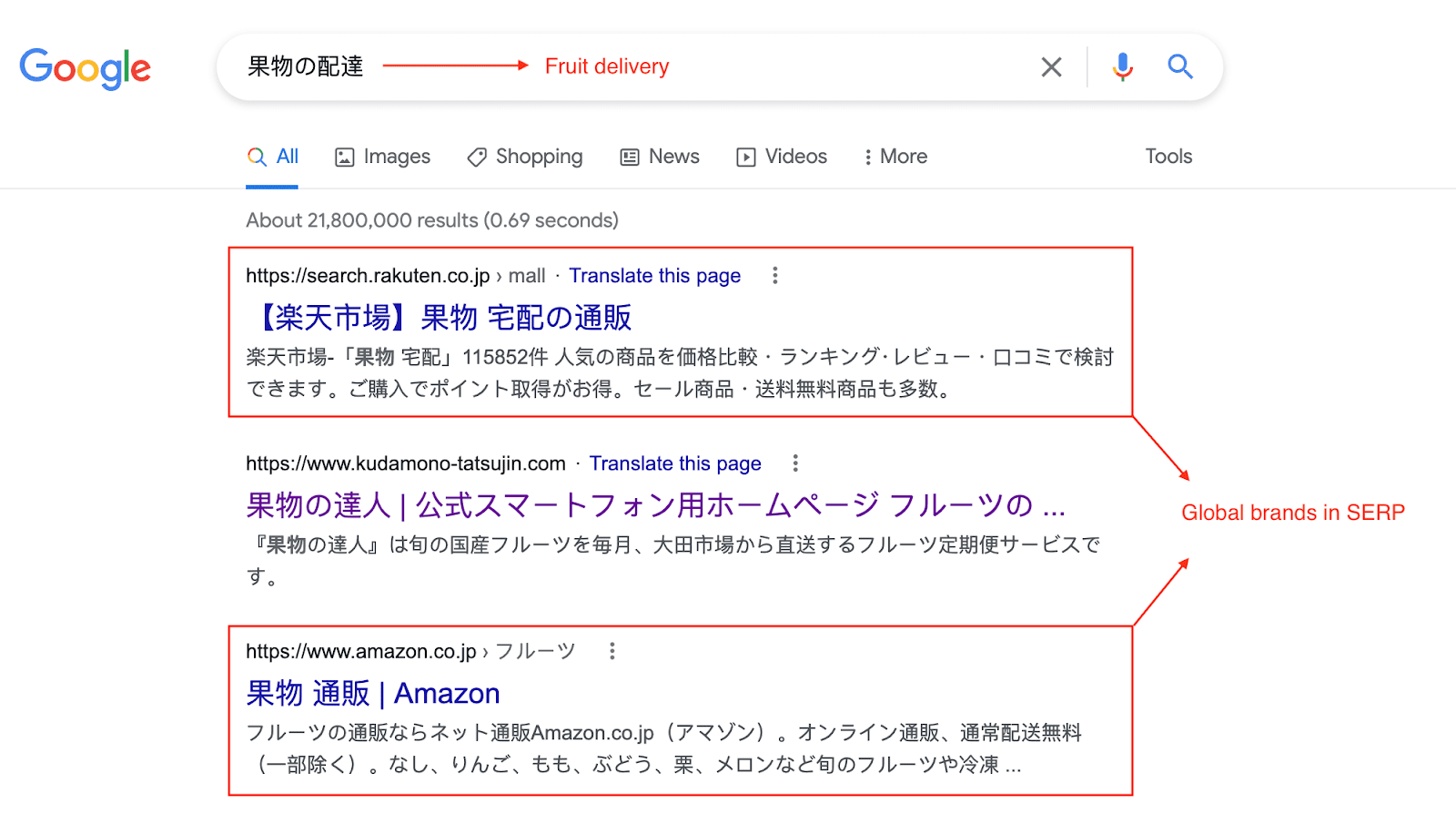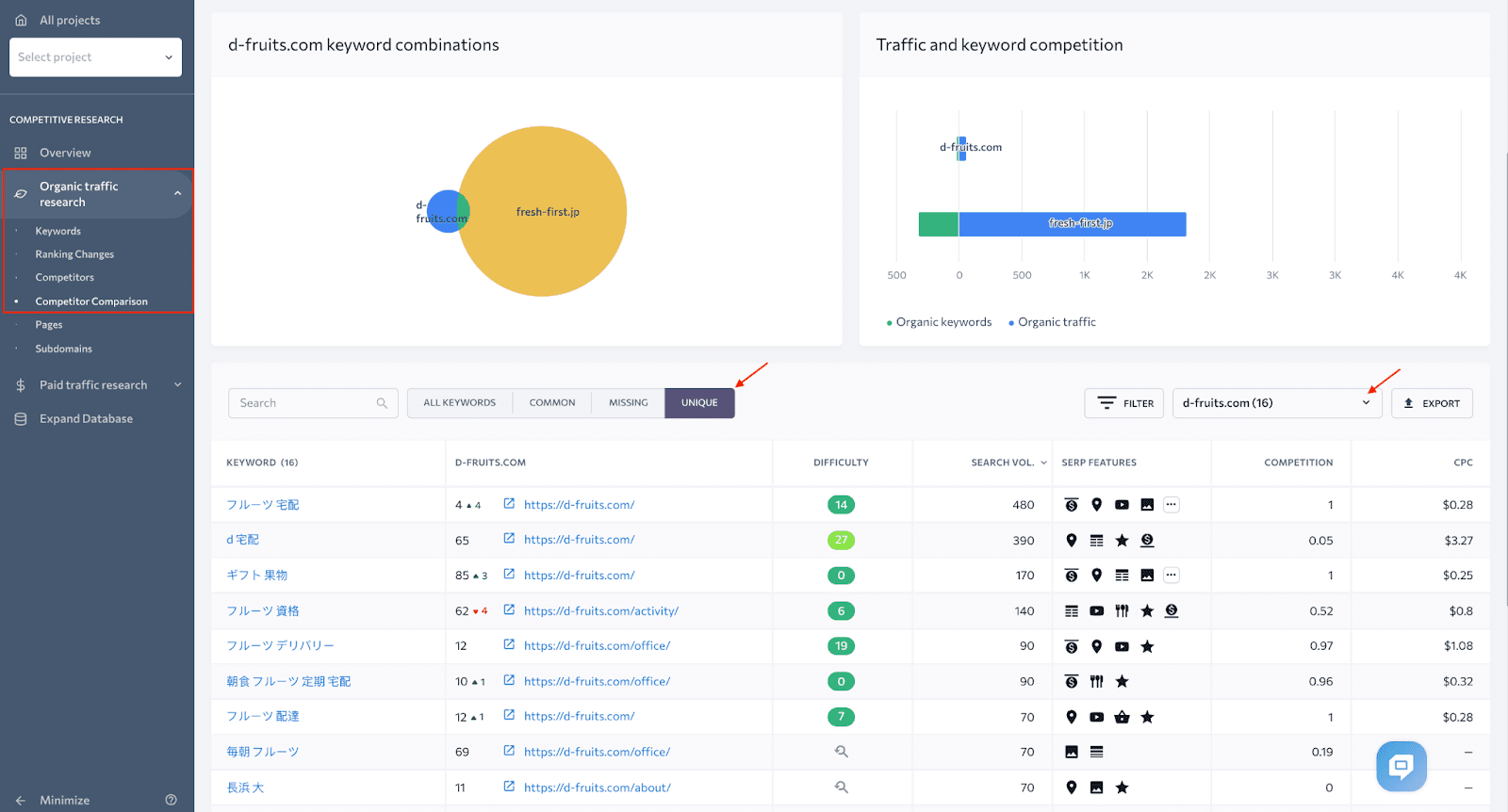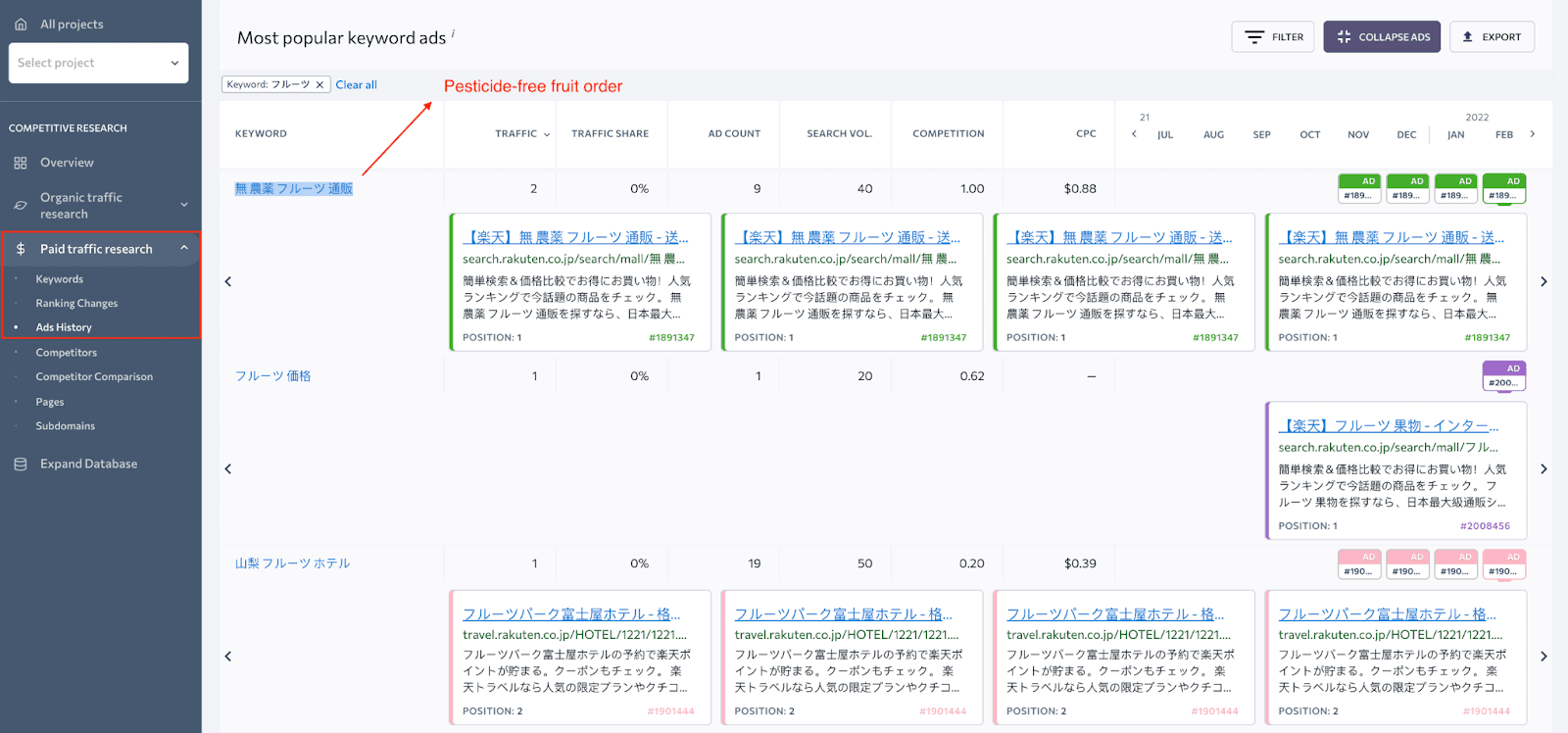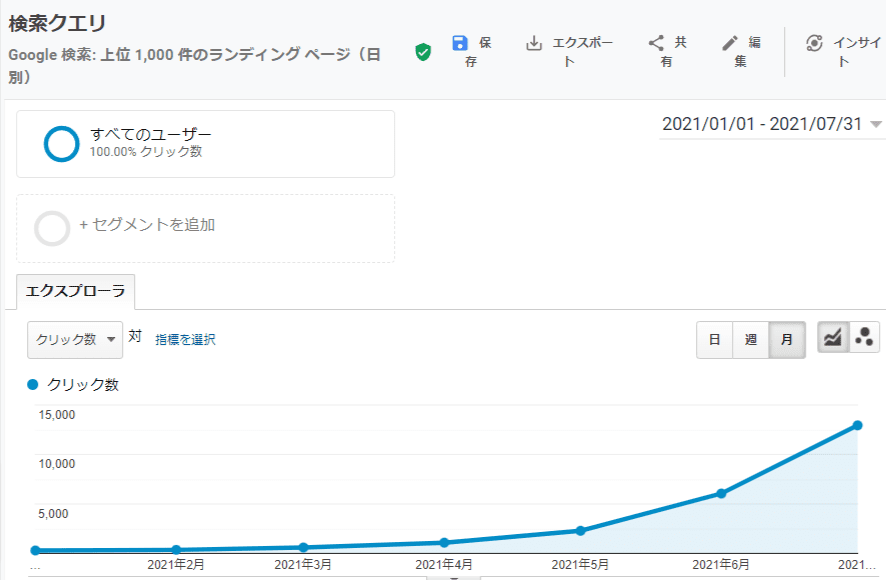How Crux agency helps a Japanese fruit delivery company bypass global brands on SERPs
The agency and its client
Crux is a Japanese digital marketing agency that provides website development, content writing, and marketing consulting services. The agency has twelve seasoned marketers on the team, and every one of them manages up to six projects.
For this article, the Crux team has shared their experience of working on their client’s project—a fresh fruit delivery company serving customers all across Japan.
The goal
Help the company compete with Amazon and Rakuten in Google’s paid and organic search results
Steps to reach the goal
- Audit the website to eliminate technical issues that could affect results
- Analyze competitors to figure out successful SEO and SEM strategies
- Check SERPs for target keywords to inform the client’s future campaigns
- Create compelling content and optimize it for easy-to-get keywords
- Monitoring client’s website rankings for the target keywords
Getting the job done
The fruit delivery company struggled to get organic traffic to their website. The SERPs for their target high-volume commercial keywords were occupied by big players, like Amazon and Rakuten. The company’s site was ranking on the fifth page of organic results—at most.

To make the client’s site visible on Google, the Crux agency had to come up with a smart combination of SEO and PPC campaigns that could turn the tide and bring instant results.
The agency made an action plan that included the following steps.
1. Audit the website for technical SEO issues
Crux marketers started with checking the client’s website for critical technical issues that could undermine SEO and user experience. To get a comprehensive technical SEO report quickly, they used the Website Audit tool in SE Ranking.
After looking at the Issue Report, they decided on two aspects that needed urgent improvement: page load speed and mobile optimization. The company expected a significant share of visits to be from mobile devices. Therefore, by improving the mobile experience upfront, the marketers wanted to prevent high bounce rates and cart abandonment rates for future SEO traffic.
We check websites of prospective customers using SE Ranking’s Website Audit tool. It helps us quickly prepare a list of required improvements.
2. Analyze competitors’ SEO and SEM strategies
The second step was studying the competition in organic and paid search. The marketers used the Competitive Research tool to analyze keywords that other niche players target in their SEO and SEM campaigns.
The Crux agency compiled a list of their client’s competitors and collected the keywords that bring organic and paid traffic to them. They used reports available under the Competitor Comparison section in the Organic Traffic Research module to quickly get the lists of unique keywords for different websites.

Then, they took a deeper look at the competitors’ content, site features, and Google Ads to figure out what worked best for them. They checked data from the Ads History reports under the Paid Traffic Research module to get the examples of sales copy and CTAs that resonate with the target audience.

“We retrieved titles and descriptions from competitors’ ads and discussed their strengths and weaknesses to create more attractive creatives for our client’s ads.”
3. Check SERPs for target keywords
Once the agency had an exhaustive list of target keywords, they needed to select the most promising queries for SEO and for Google Ads. They considered the metrics that SE Ranking showed for search volume and keyword difficulty as well as analyzed the domains that held positions in the Top10.
If the team saw that large websites with high domain authority, such as Rakuten and Amazon, own the top organic positions in SERPs for a keyword, they won’t target it with SEO content. Instead, they would run PPC ads for this keyword.
If they saw that no big players were in the ball field in the SERP for a keyword that potentially can contribute to the client’s sales, they would create a relevant page and optimize it for the keyword. In other words, the agency centered its SEO effort around low-hanging fruit as it strived to gain the first results as quickly as possible.
“We cherry-picked keywords that big players were missing. By targeting them, we wanted to bypass the biggest competitors in search.”
4. Create content and nail on-page SEO
Having selected keywords for SEO, the agency prioritized their list based on the search volume and keyword difficulty score shown in SE Ranking. Then they mapped the keywords to pages and defined what content they should rewrite or create and optimize from scratch.
Along with the main textual content, the marketers optimized other page elements using the target keywords. For example, they added keyword-rich anchor texts to every internal link on the website and optimized alt texts for images.
To ensure that the website content brings the maximum value for users, the agency added FAQ sections to pages. For this, they surveyed the client’s customers to collect questions they often have before they order and upon delivery. This helped the client to be more transparent about their services and build trust with website users.
“Content is King! We believe that writing well-optimized textual content that brings value to the user has the strongest impact on rankings.”
5. Tracking the client’s website rankings
All the keywords that the agency collected for the client were added to SE Ranking’s Rank Tracker tool. This allowed the agency to check if their SEO efforts had the desired impact on the client’s website positions and react timely to fluctuations.
We use SE Ranking to monitor keyword rankings dynamics. When the client’s rankings drop for a certain keyword, we update content on the corresponding page.
The results
Within a month, the client’s pages optimized for the main target keywords have moved from the 5th to the 1st page of search results. The company managed to get over 20,000 organic search visits for six months, and their website’s SEO traffic is growing steadily.

“For the first six months, we managed to get five times more organic traffic than we expected.”
Takeaways
The Crux agency’s experience has proved that national companies can compete in search results with global billion-dollar brands. Smart competitor research, mindful selection of keywords, and high-quality content still can do wonders for SEO.
With SE Ranking, you have every tool you need to create your winning SEO strategy and take your share of organic traffic on Google.

